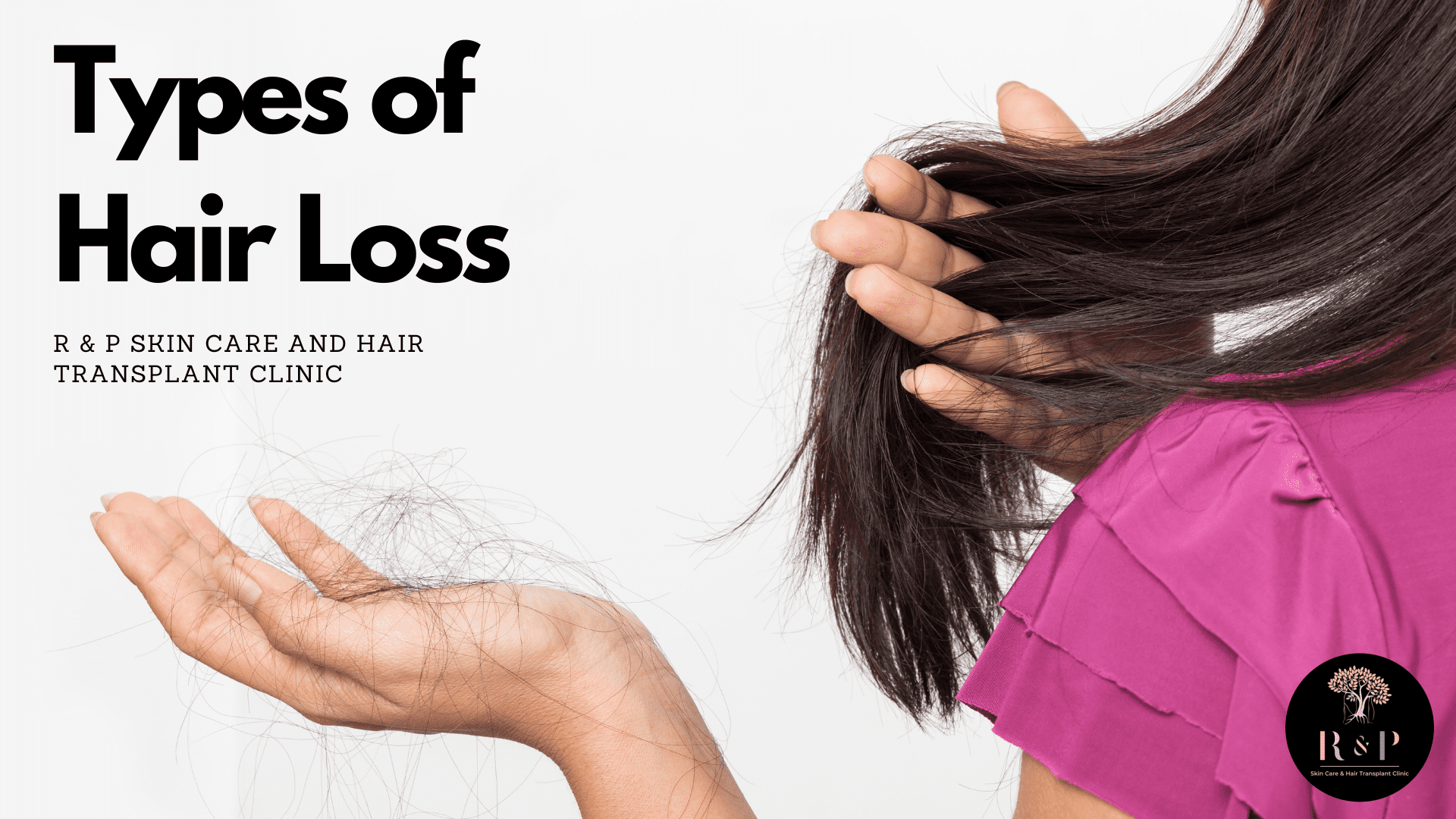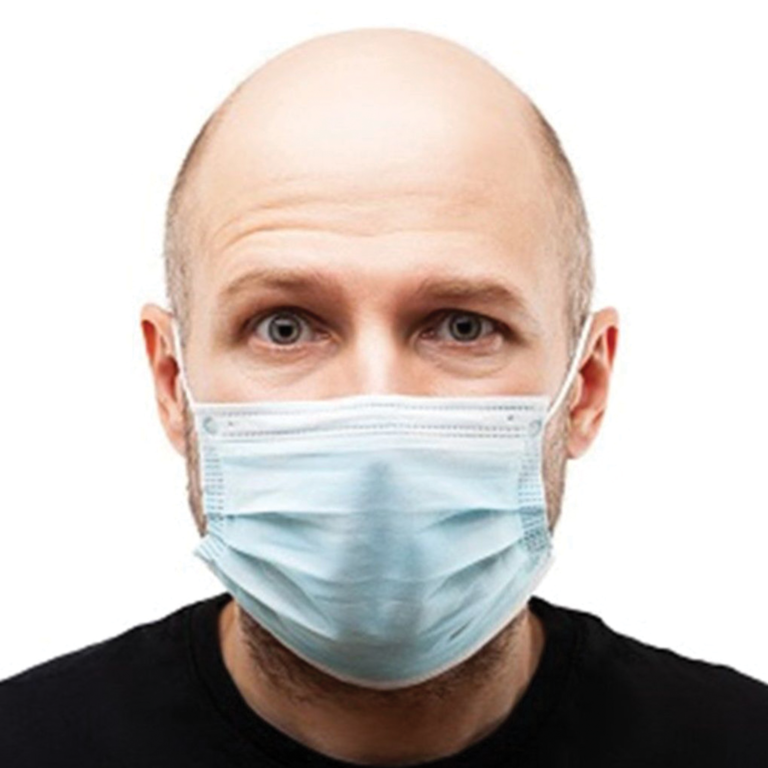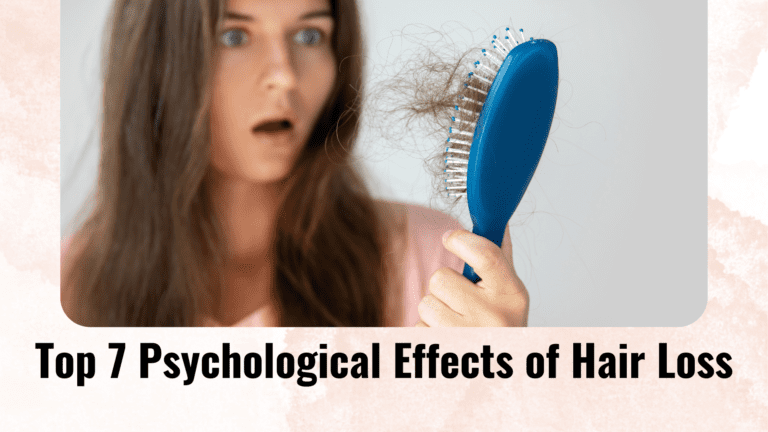What are the types of Hair Loss?
Alopecia, another name for hair loss, is a condition brought on by a disruption in the body’s natural hair growth cycle. Although it can happen everywhere on the body, the scalp is where hair loss most frequently occurs. The 100,000 hairs on the average scalp go through cycles of growth, rest, shedding, and regrowth.
The three phases of a hair growth cycle are as follows. The anagen phase is when hair is actively growing. This stage could last for many years. The structure under the skin that maintains the hair in place, the follicle, splits from the hair during the catagen phase of the hair cycle. Ten days or so are spent in the catagen phase. The follicle rests for two to three months during the telogen phase, after which the hair emerges. The subsequent anagen phase starts as a new hair grows in the same follicle. Most people experience hair loss for 50 to 100 strands as part of this regular cycle.
Hair may start to come out more quickly than it is replaced if this cycle is broken or if a hair follicle is injured. It can cause signs including a receding hairline, patchy hair loss, or general thinning.
Types of Hair Loss
Involutional Alopecia
Age-related hair thinning is a natural condition known as involutional alopecia. The surviving hairs get shorter and fewer in number as more hair follicles enter the resting period.
Androgenetic Alopecia
More than 60 million men and 30 million women suffer from androgenetic alopecia, the most widespread hair loss. The inherited disorder known as androgenetic alopecia, also called male or female pattern baldness, can be treated with medication or surgery.
Alopecia Areata
Children and young adults with alopecia areata frequently experience patchy hair loss that begins unexpectedly. This disease could lead to total baldness (alopecia totalis). Yet, in 90% of those with the disorder, the hair grows back after a few years. Everybody’s hair, including the eyebrows, eyelashes, and pubic hair, sheds due to alopecia universalis.
Cicatricial Alopecia
The condition known as cicatricial alopecia, or scarring alopecia, is an uncommon kind of hair loss in which scar tissue grows in its place after inflammation destroys the hair follicles. Hair doesn’t grow back when scar tissue has formed.
Hair loss may start so gradually that no symptoms are present, or it may happen all at once. Some other symptoms are severe itchiness, swelling, and sores on the scalp that may resemble a rash. Both men and women can have this form of hair loss at any age.
Central Centrifugal Cicatricial Alopecia
Hair products or styling methods that harm hair follicles can cause central centrifugal cicatricial alopecia. Central centrifugal cicatricial alopecia can be brought using hair relaxers, blow dryers, curling irons, and extensions. It can also be brought on by getting a “perm,” which is a permanent wave.
This issue can also be brought on by applying oils, gels, or pomades, though it might be curable if you stop using these hair products or styling methods. Dermatologists could advise taking medicine to promote hair growth.
Loose Anagen Syndrome
Loose anagen syndrome happens when hair not firmly rooted in the follicle can be removed easily. This condition most frequently manifests in young children. Hair often stops growing after reaching a predetermined maximum length. It is common for kids with loose anagen syndrome to only be able to grow their hair to a relatively short size. Girls with blond or brown hair are more frequently affected by the illness.
Hair can easily fall out in those with loose anagen syndrome, even when it is growing. For instance, the friction of a pillow might cause hair loss to worsen during the night. Although the exact aetiology of loose anagen syndrome is unknown, it may be linked to a condition that interferes with hair retention in the follicle.
The problem tends to improve with puberty significantly, and some drugs may lead to thicker hair, but there are few effective therapies.
Conclusion
An illness may occasionally be indicated by hair loss. Yet hair loss on its own has no health risks.
Your hair loss could be either temporary or permanent, depending on what’s causing it. Treatments can help with some forms of hair loss.







